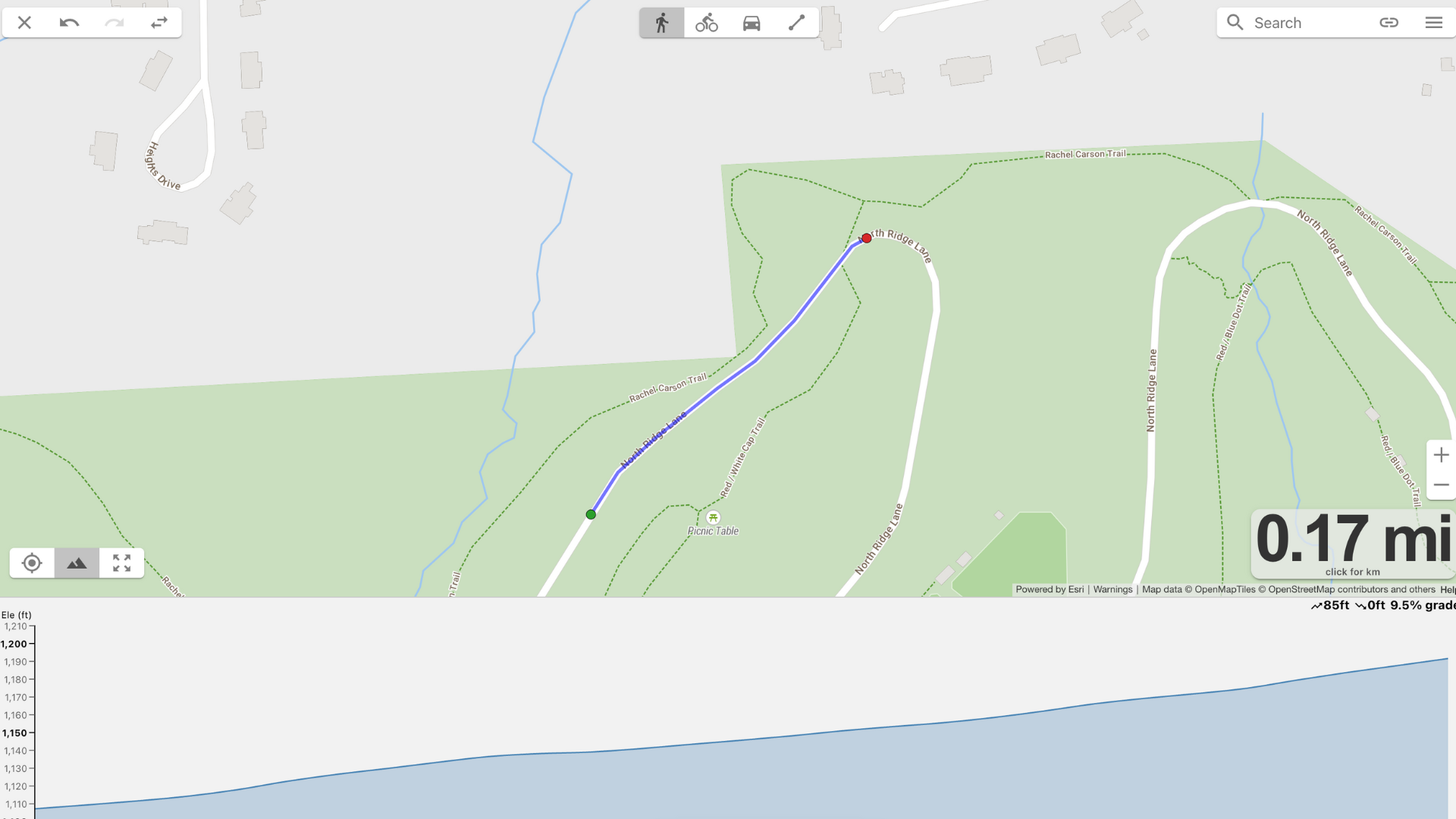I’ve written before about why hill repeats are an excellent thing to add to your run training, and how to get started. But one of the trickier aspects is finding the perfect hill, or even knowing how steep the incline of that hill is. A tool I recently started using makes this super easy.
The tool is officially called On the Go Map, but you can easily search for it by its nickname, “How Far Did I Run?” To use it, click the start and end points of your hill. (I use the walking icon, which snaps the path to walkable roads and paths, but you can also draw straight lines if you prefer.)
You can use this tool to measure the distance and elevation of any running route—like a free version of MapMyRun—but when it comes to your favorite hill, all you have to do is create that mini route that goes up your hill, and then click the elevation icon in the bottom left corner of the screen. (It looks like a mountain.) Then a pane opens up at the bottom of the screen, showing the overall grade of the hill as a percentage.
This percentage is the same as what you’ll see when you select the incline on a treadmill. 1% or 2% would be a very mild hill, a gentle rolling grade. My favorite “I would like to die doing hill repeats today” hill is 8%, and anybody going over 10% on a regular basis is a certified maniac. Most gym treadmills top out around 12%.
In the example picture at the top of this article, I’ve selected a portion of hill in a local park. On the Go Map helpfully tells me how long that segment is (0.17 miles, so a little less than a lap of a quarter-mile track) and how much elevation I’ll gain going up it (85 feet). To find the percent grade, look in the upper right hand corner of the elevation pane. This hill is a 9.5% grade.
If you haven’t found the perfect hill to measure yet, tap the menu icon and choose “terrain” as your map style. Any road that crosses multiple contour lines is going to be a steep one. Pan around until you find a promising looking hill, and then measure it.
